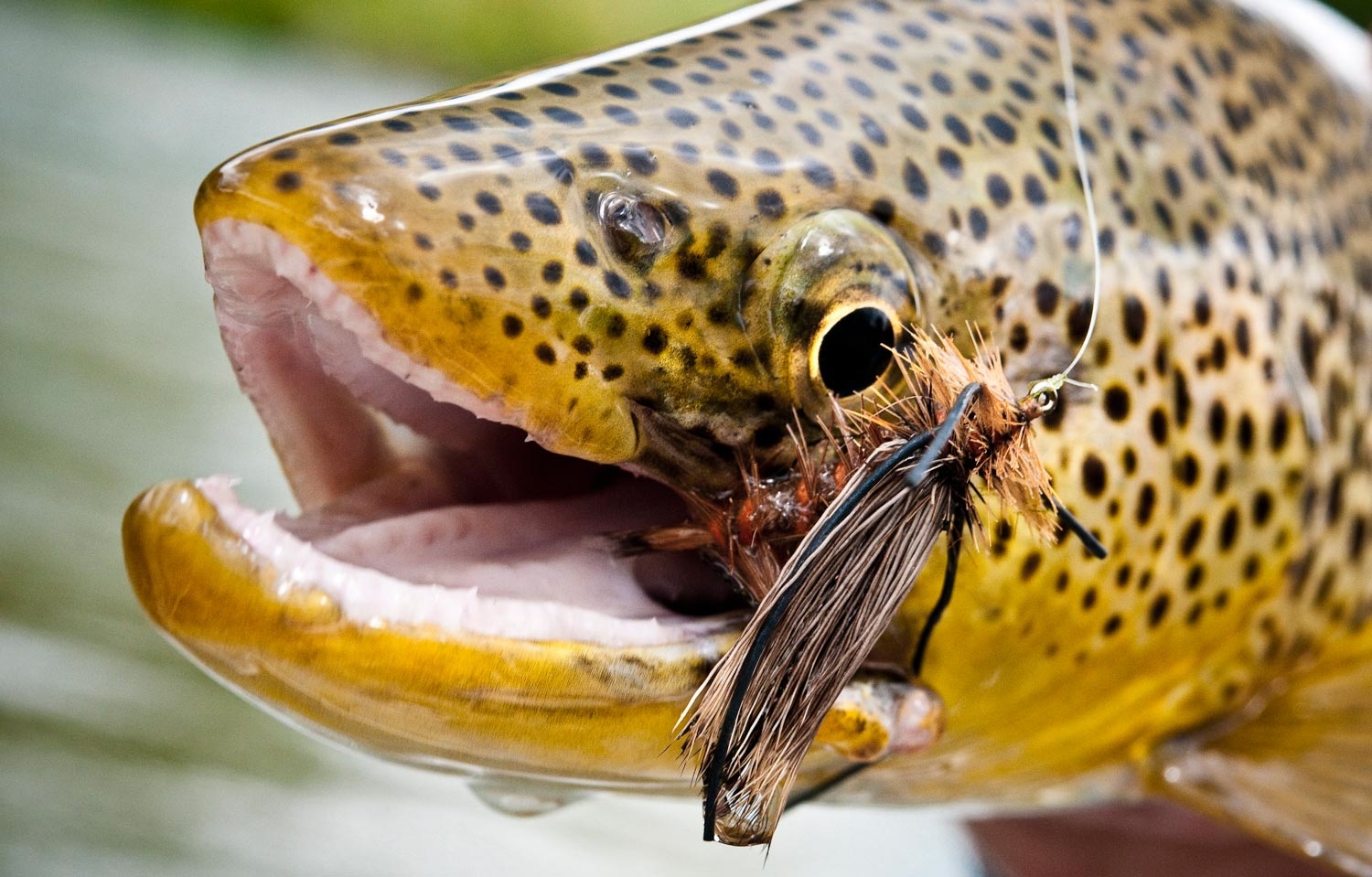Over the years, I’ve made the mistake many times of walking past trout water that I thought was too shallow to hold trout.
Most of the year trout prefer depth transitions where shallow water flows into deeper water. These transitions provide shelter from excessive current and increased safety for trout, and locating them is usually the ticket to finding and consistently catching trout. However, during the summer months, brown trout particularly will often disregard these areas, opting instead to hold tight to the banks in extremely shallow water. They do this to take advantage of terrestrials falling into the water, but I think they also do it because there’s generally shade available and they instinctively know it’s a good spot for them to remain largely undetected.
Kissing your beetles, ants, hoppers and general attractor patterns against the banks during the summer and early fall months is a great tactic for targeting big mature brown trout. It’s great to have a nice current seam or foam line near by, but it’s not always mandatory. The most important variable in targeting water against the banks is having stream bank foliage or undercut banks. Trout water flows during the summer months as well as the beginning of fall generally runs low from the lack of rainfall. These low flows have trout spooky and very aware of their surroundings. Fly fishing during this season of the year demands stealth and a good first presentation to increase chances of catching fish. When guiding clients this time of year, we slow down and work as a team. I’d rather have a quality presentation over quantity. The first tip I teach my clients is to scan likely holding water before casting. Quite often, your best shot is to catch a big brown trout off guard, and the best way to do that is to make an accurate presentation and drift right off the bat. Scan the water for white mouths opening and closing and look for the tails of fish slowly kicking in the current. The shadow of a fish on the bottom of the stream bed is another give-away.
Slapping your fly down on the water can be a powerful way to trigger an aggressive take. Unfortunately, it doesn’t always work and in some cases can spook the fish. Another tactic is to subtly twitch the fly when it enters the fish’s field of vision once or twice. A brown trout that’s positioned close to the bank and regularly feeding on terrestrials gets very accustomed to seeing struggling movements from land-born insects that have fallen in the water. So keep these tactics in mind if a standard dead-drift presentation isn’t working.
Work the fish with your leader during your presentation and drift, while keeping your fly line out of the fish’s sight during the cast and drift. If I know I’m going to be dealing with educated trout, I sometimes will lengthen my leader a few feet to give me extra stealth. A lot of fly anglers will tell you the best terrestrial fishing in the summer and early fall is during the middle of the day, when bugs are the most active. Although this can be the case, I’ve found my best success at fooling big brown trout is during the early morning hours, or last couple hours of the day when the sun is low in the horizon. Big brown trout tend to feed more frequently during these times because they feel more comfortable and safe.
Keep it Reel,
Come fish with us in the Bahamas!
Kent Klewein Gink & Gasoline www.ginkandgasoline.com hookups@ginkandgasoline.com Sign Up For Our Weekly Newsletter!

Simple, direct, to the point. Great advice, Kent. Thanks!
Wes,
Thanks for taking the time to check out and letting me know you found it helpful.
Kent
Nailed it!
Chris,
Thanks my NZ friend.
Kent
Good advice advice will be putting it to the test.
I love this time of year (other than the first 2 weeks when the leaves fall)! The high temps recede and the waters cool off. The fishing gets better and the browns are moving up. This is my favorite time of year to A. do some small stream fishing and B. start trophy hunting. Most of my best catches come in the fall and winter months. The advice to look for browns during the early morning hours and later evenings is spot on.
As usual, this is right on the money. I was surprised a few times by larger than expected browns in unexpected places until I figured this out. My favorite surprise fish to date was an October kyped male on a size 20 zebra midge in shallow water when I was expecting the stocker sized rainbows I had been catching (on our home river, Kent). It was a struggle to get that fish in, and it was my largest brown to that point, which I will remember forever.
Ralph,
What a fish man. Thanks for sharing that and glad you agree with some of those tips.
Kent
I like to twitch my terrestrials on landing, imitating the shock of the bug hitting cold water